Buying diamond jewelry is a big commitment. The most expensive gemstone in the world is the blue diamond, which costs nearly $4 million per carat!
Whether you are planning to go jewelry shopping online, or at a shabby jewelry store, there are certain things you should be aware of to confirm the authenticity of your new diamond stone.
From September 1 to November 27, 2019, the ABC-affiliated television station WHAS-TV reported that U.S. Customs and Border Protection officers in Louisville, Kentucky, seized 164 shipments containing counterfeit designer bags, jewelry, footwear, and sunglasses worth more than $95 million.
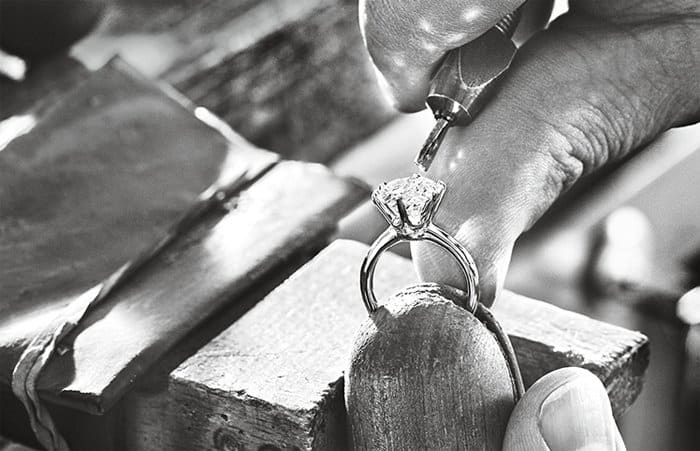
While the most reliable way to authenticate your diamond is to consult a trained gemologist, the following are 7 steps to help you identify fake jewelry:
1. Check the Certification
All diamond jewelry that comes from authorized sellers will include a certificate from a grading authority like the Gemological Institute of America (GIA), International Gemological Institute (IGI) and American Gem Society (AGS).
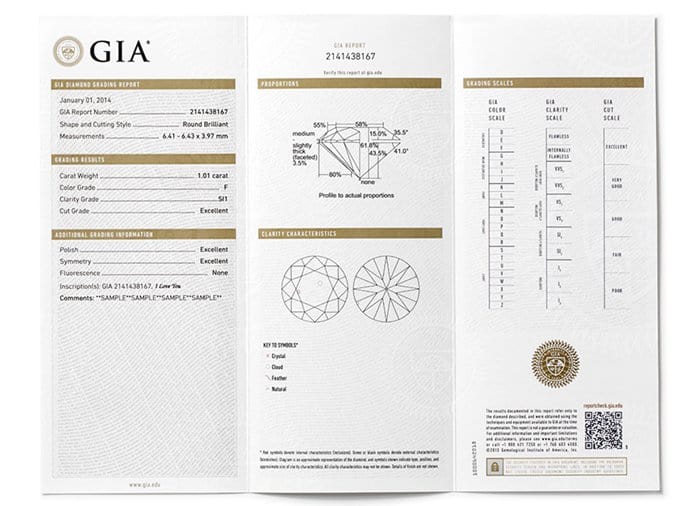
These agencies are trusted to provide a detailed report about the diamond, including the carat, shape, cut, clarity and more.
2. Check the Reflection
The reflection of a genuine diamond stone will have different shades of gray and white on the inside, which is also known as “brilliance”.
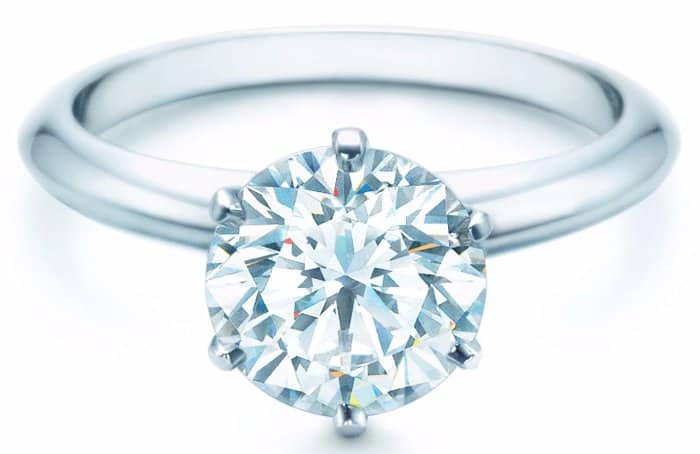
On the outside, the stone should have a reflection of light rainbow colors. Fakes will have rainbow-colored reflections on the inside.
3. Do the Fog Test
One of the most popular ways to check for a diamond’s authenticity is by doing the fog test. Breathe on the stone and watch how quickly it fogs up.
Because diamonds are able to disperse heat very rapidly, the fog should vanish from a real gem almost instantly. On the other hand, fakes will supposedly stay fogged for longer than 2 seconds as condensation builds up. Unfortunately, it’s doubtful this theory is reliable.
According to the Gemological Institute of America (GIA), this test cannot be replicated with consistent results. In many cases, synthetic diamonds and natural diamonds will react in the same way.
4. Check the Refractivity
Refractivity is the diamond stone’s ability to bend or refract light that passes through, contributing to the stone’s brilliance. This is one of the stone’s most important qualities.
Brilliance is an inherent property of a diamond and can not be easily replicated in fakes. To test the stone’s refractivity, try the newspaper method.
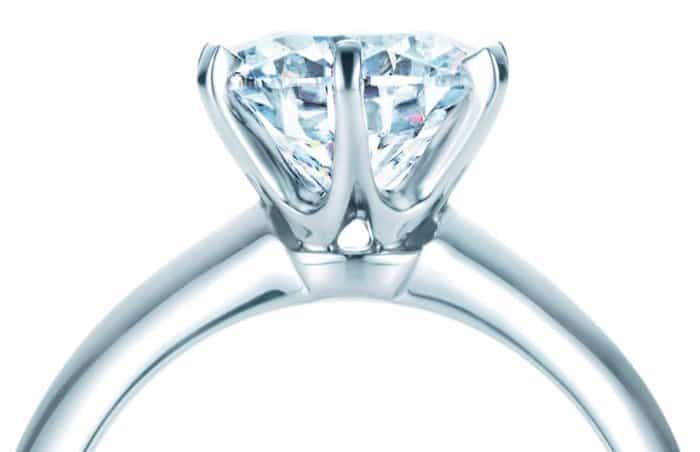
If your diamond is mounted, turn it upside down and place it on a newspaper (or other text printed materials) and observe.
In fake diamonds, you will be able to see through and read the print. A real diamond, on the other hand, will bend the light and you won’t be able to read the text.
5. Do the UV Test
Most (but not all) diamond stones will have a light blue hue when displayed under ultraviolet light. Test your diamond jewelry by looking for this fluorescent blue hue.
However, because not all diamond stones will have this blue undertone, the absence of a blue hue under UV light does not always confirm that the stone is a fake. Other gemstones can emit different colors like green, yellow or gray.
6. Water Test
The water test is one of the easiest ways to check for authenticity but this only works with loose diamond stones. Real diamonds have high density, which makes them sink fast in the water.
Low-quality fakes will be a lot lighter than genuine diamonds and will either float on the surface or sink significantly more slowly.
7. Inspect Through a Loupe
A jeweler’s loupe is a handy tool for a diamond lover/collector. When inspected through a loupe, mined diamonds will often reveal slight imperfections on the surface called inclusions.
The below jeweler’s loop from Jarlink ($9.99 at Amazon) makes it possible for you to distinguish and see objects clearly.
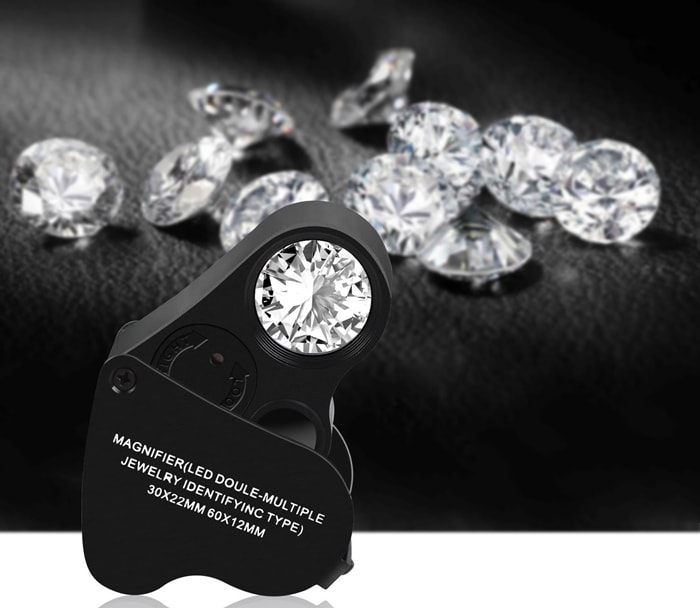
Typically, natural diamonds have tiny flecks of minerals and imperfections in the carbon. Closer inspection of a real diamond will usually also display sharp edges, while fakes will appear more rounded. However, in rare instances, natural diamonds will be flawless and you will see no inclusions.
Fake diamonds will often look absolutely and impossibly perfect through the loupe. In the last few years, counterfeiters have become increasingly sophisticated and make imitations that look like the real thing. You may need a professional eye to spot a difference.
Will sandpaper scratch a diamond?
Using sandpaper to identify real diamonds is dangerous and should never be done. To understand why, you must learn about the Mohs scale, which is a qualitative ordinal scale characterizing scratch resistance.
Friedrich Mohs, a German geologist/mineralogist, invented a scale of relative mineral hardness to identify minerals in 1812.
A diamond is rated as 10 on the Mohs scale of hardness and is the hardest mineral known to man. The grit on sandpaper has a hardness between 7 and 9 on the Mohs scale and can scrape the surface of the gem. If the stone is set, the metal can be damaged as well.
Watch the informative video below for more tips on how to spot fake diamonds:
Credit: Tiffany & Co./GIA
